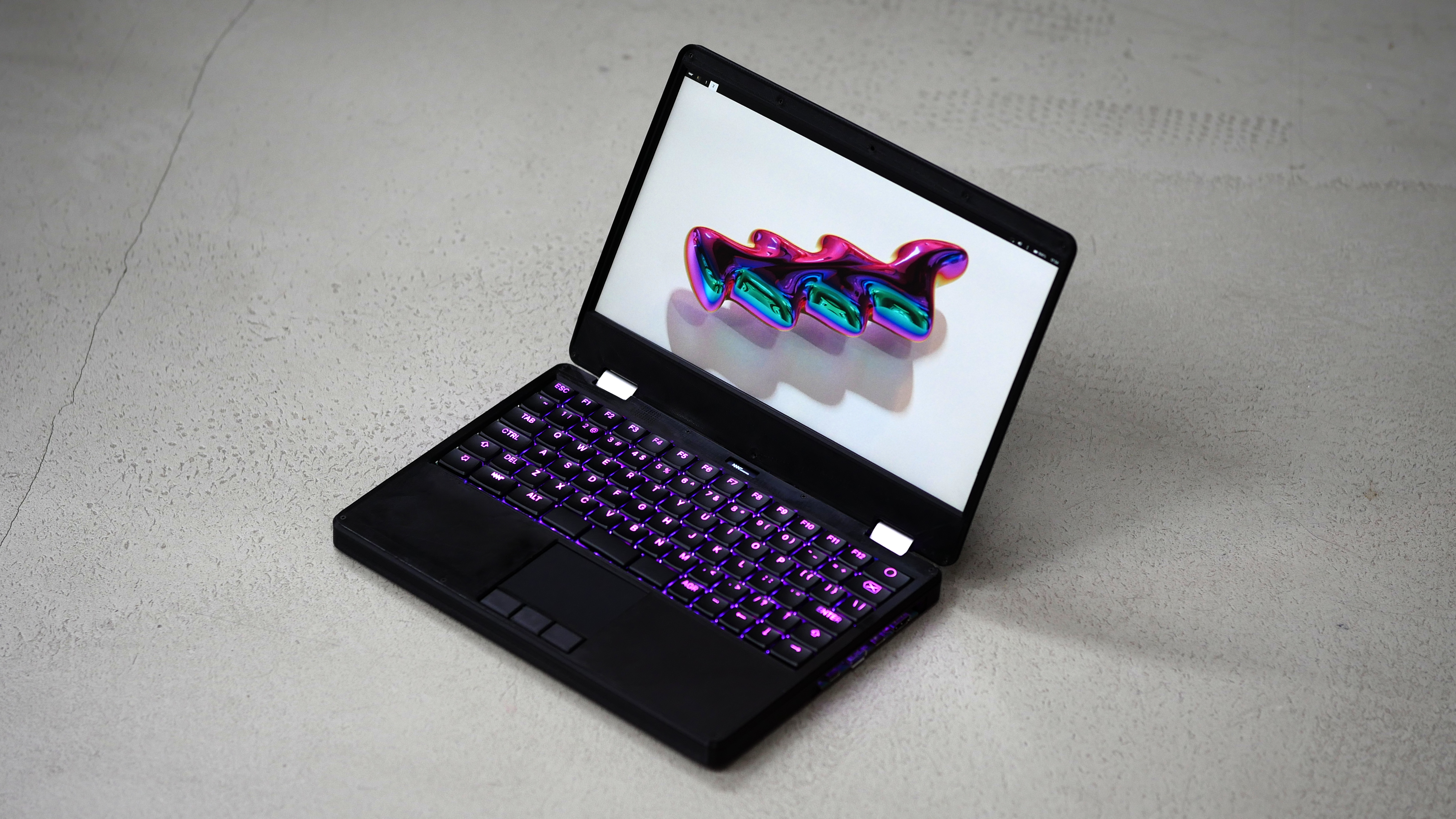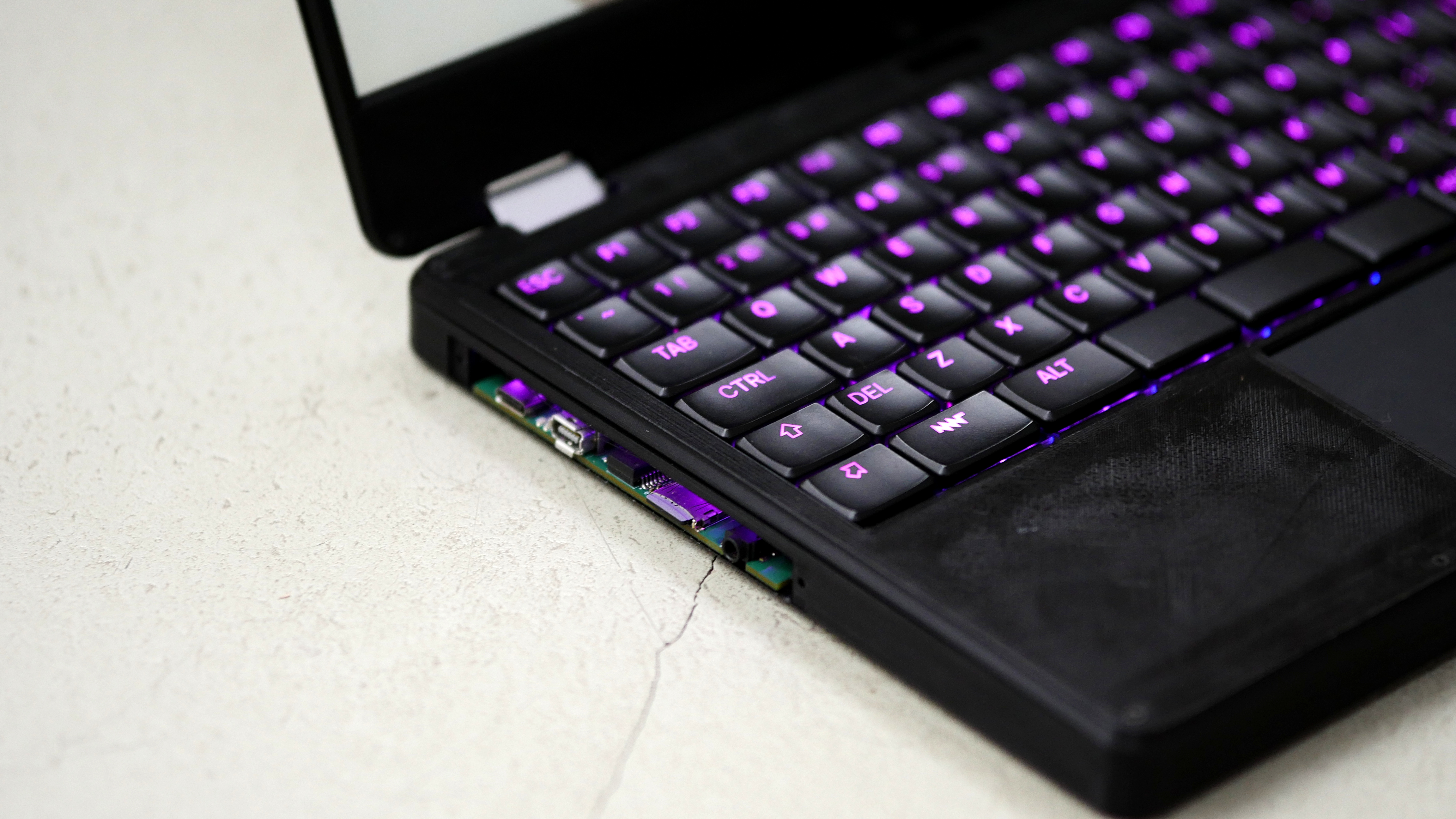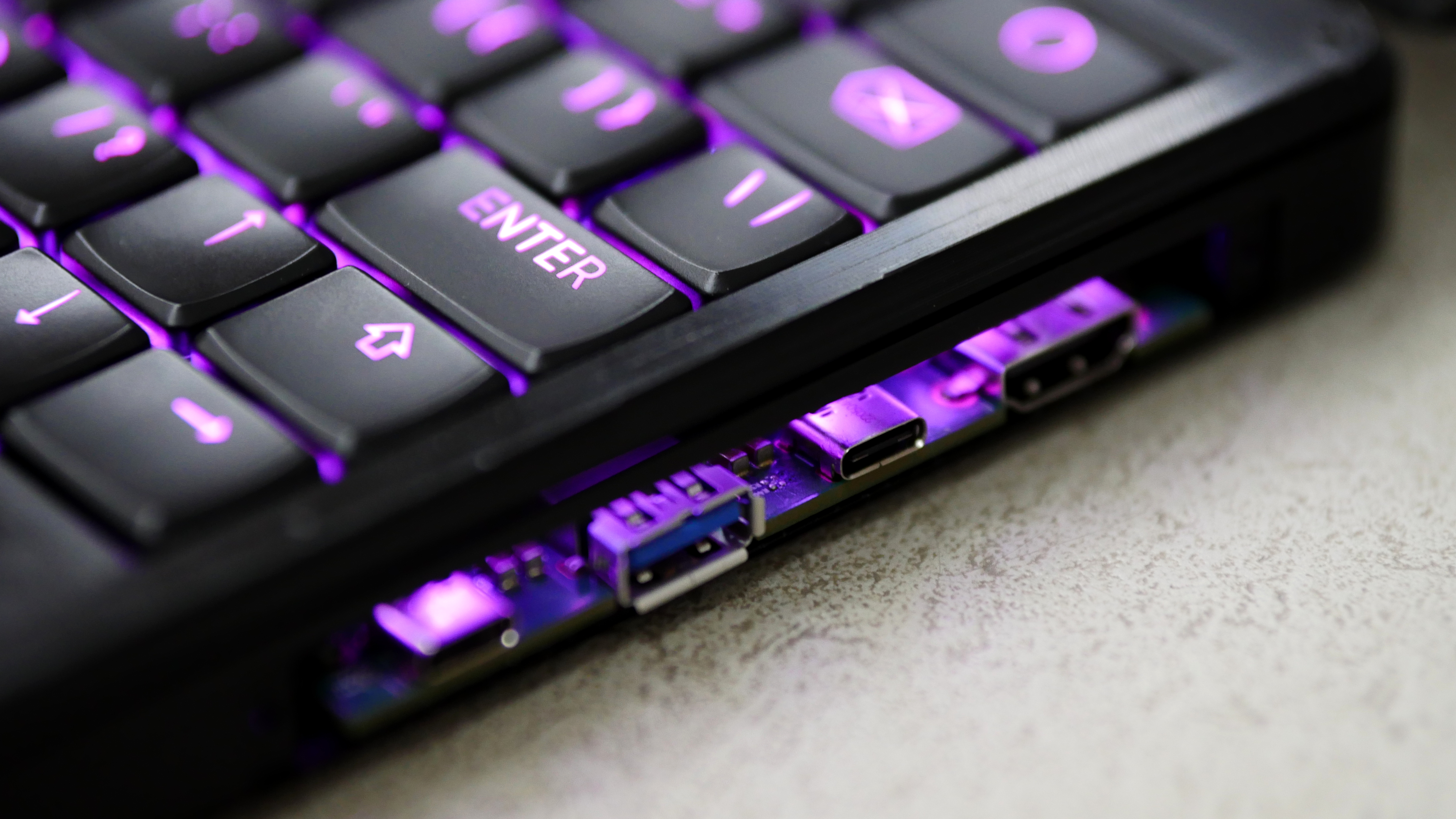Introducing MNT Reform Next
A future proof laptop with a retro futuristic aesthetic: This is MNT Reform Next.
Based on Classic MNT Reform, our new laptop takes Open Source Hardware to a new level. By combining high performance and high mobility with modularity, customizability, and repairability, MNT Reform Next has the potential to become more than just your daily driver.
The original Open Hardware laptop, reloaded.
Update: Stay in the loop by subscribing for email updates at the official prelaunch page for MNT Reform Next at Crowd Supply.
Being highly performant, modular, and upgradeable, MNT Reform Next gives you more freedom than any other laptop. Swap modules, print your own case, customize your keyboard. Since we are committed to open hardware, all sources are public.
While Classic MNT Reform is a portable device, we felt like a sleeker, more lightweight design would increase portability and make for a more flexible laptop. We achieved this by:
- Splitting up the motherboard into a number of interconnected, specialized boards that take up less space and also make the laptop even more modular
- Designing completely custom 18650 battery packs that tightly integrate electronics into the mechanical structure
- Swapping the trackball for a trackpad
- Adding three ultra low profile trackpad buttons with Cherry MX switches for a more convenient scrolling and clicking experience
- Keeping our renowned mechanical keyboard with RGB backlight and Kailh Choc Switches
Not only did we manage to increase portability — we also wanted MNT Reform Next to be highly performant. Our latest compatible processor module, the RK3588, makes it possible. It is suitable for software development, open source CAD/media work, and OpenGL 3.1 gaming and emulation. More benefits include:
- 4x performant ARM Cortex-A76 cores (up to 2.4GHz)
- 4x power-efficient ARM Cortex-A55 cores (1.8GHz)
- Powerful ARM Mali G610 MP4 GPU with open source panthor graphics driver
- 16 or 32 GB RAM
- Dual display
- Fast PCIe 3.0 + 2.0 and USB 3.0
Due to the modularity of MNT Reform devices, you can swap out the processor module (and other components) to upgrade to a newer one. We are constantly researching the latest ARM-based processor modules to provide upgrades for our devices and make them future proof.
Use Cases
MNT Reform Next is not only suitable for hackers and tinkerers — it is also meant to be used by Linux beginners and Debian enthusiasts. Analogous to our previous devices, we will provide a detailed operator handbook and a quickstart manual to get you started. In addition, you can always ask our welcoming and knowledgable MNT Community for help.
Daily Driver: With MNT Reform Next, you are as flexible as you need to be. Browsing, writing, programming, commuting, graphics design, sound creation, video editing — your new daily driver features the highly performant RK3588 processor module, a sleek and portable design, plus MNT's renowned mechanical keyboard. A reliable and versatile device for every day.
Programming/Writing: Whether you code your projects on the train, write your novel in a cafe or take notes in class or at work — Reform Next is your reliable on-the-go device.
Office on the Go/Remote Administration: Review a document or give a presentation at a conference or do some system administration on the go. Enjoy the mechanical keyboard for SSH and remote desktop. Wirelessly sync files and photos with your phone and PC using Syncthing or SFTP.
Chill-out: Being lightweight and compact, Reform Next is perfect for relaxing on the couch. Chat with your friends, watch a video, read an e-book or an article, play a video game, or remotely access your other PCs.
Commuting: Time flies by on trains and buses with MNT Reform Next. Go online and browse the web — or keep yourself busy by hacking on your projects, organizing your files, or reading a digital comic.
Music: Connect a USB-C audio interface and Reform Next can be your portable audio workstation with free and open source music creation software.
Community: If you like to tinker with gear and make your own tweaks, MNT Reform Next is your device. Make your own modifications on three port boards and share your progress with the MNT Community or on the Fediverse. Everyone is welcome to contribute to this thriving open hardware ecosystem.
Why We Build Sustainable Open Hardware Computers
Lukas "minute" Hartmann started developing the very first MNT Reform open hardware laptop in 2017 — out of the frustration of closed hardware that is not repairable, not upgradeable, not future proof. Planned obsolescence has become the default and MNT Research opposes this hypercapitalist and destructive concept in any way possible. We don't want to add unnecessary waste to an environment that is already vulnerable. We don't want to add AI features that corrupt the system by creating misinformation and devaluing creative work. Instead, we want our users to have more freedom, we want them to actively contribute, we want to make open hardware the norm.
It is not an easy thing to do. As a very small company with only a handful of employees, we as MNT Research have to be very efficient in what we do. Since we want to stay independent and oppose venture capital, we are dependent on crowdfunding and grants to be able to develop and produce our devices (thanks to Crowd Supply and NLnet for their ongoing cooperation). Producing and manufacturing only small amounts is very expensive, which is why we also depend on the system of preorders. Our products are build to last and we want to avoid compromises. This is also the reason why we don't have much wiggle room in terms of prices at this time.
In turn, you get a device that is:
- Open Source Hardware, incl. sources and schematics
- Customizable
- Modular
- Upgradeable
- Future proof
- Repairable and self-serviceable
- Silent (no fan)
Since we believe in the power of collaboration and communication, we have started an MNT Community Forum years ago, where our users can have an open dialog about MNT's devices, share their hacks and fixes, make suggestions, and ask questions. It is important to us to be in contact with you, our users. You keep us going and we are incredibly grateful for your ongoing support.
Next Steps
Before we dive into all the technical details of MNT Reform Next, we want to give you an overview of the next steps.
MNT Reform Next is still at the prototype stage, but we are very happy that the device is booting and many features are already working. In the upcoming weeks, we will finalize the software as well as the hardware. The 3D printed case you can see in the photos will be replaced with a robust CNC-milled, bead-blasted, anodized 6061 aluminum case.
And, once more, there will be a crowdfunding campaign on Crowd Supply. We are very excited to get the pre-launch page online. Expect more news on this later this week on the Fediverse and in the news section on our website!
Detailed Specs
Motherboard
Status: Version D-1 (code named "Reflex") designed, soldered, brought up on 2024-06-21.
Processor Modules:
MNT Reform Next supports a variety of Processor Modules. The standard module is the RCORE with 8-core Rockchip RK3588 processor and Mali G610 GPU: https://source.mnt.re/reform/mnt-reform-rk3588-som/#mnt-reform-rcore-rk3588-som
Port Boards
There are three port boards in total on the left, right and back:
Port Board One
Port Board One is mounted on the left side of the case and is responsible for USB-C Power Delivery. When customizing this board, this functionality must be retained for powering the laptop. Copy the KiCAD source files as a starting point. There is a mechanical/spatial coupling with the keyboard that rests above the ports. This defines the space that is available for ports. Any parts and connectors should not be taller than x mm above a 1.6mm PCB, because keycaps could collide with the components when being pressing down.
Details:
- USB-C with USB 3.0 + 2.0 signaling and USB Power Delivery
- 1 GBit Ethernet (ix Industrial. Device will be shipped with a short ix to RJ45 jack dongle.)
- MicroSD slot (bootable)
- TLV320AIC3100 Soundchip with internal speaker driver/connector
- Headset TRRS jack (stereo headphone driver and mono microphone support)
Port Board Two
Port Board Two is mounted on the right side of the case and mainly provides USB connectivity (3 ports), plus HDMI. Copy the KiCAD source files as a starting point. A similar mechanical/spatial coupling with the keyboard as with the Port Board One constrains the port placement.
Details:
- Full-size HDMI
- 2x USB-C with USB 3.0 + 2.0 signaling
- 1x USB-A with USB 3.0 + 2.0 signaling for legacy USB devices
Port Board Three
Port Board Three hosts a Wi-Fi/BT chipset by default. It receives USB 2.0, SDIO and UART (with flow control) signals as well as 5V and 3V3 power from Processor Modules that support this (like the RCORE RK3588 module).
The default Wi-Fi/BT implementation is based around the Ezurio Sterling-LWB5+ Wi-Fi 5 with Bluetooth 5.2 SMT module. The chipset is Cypress CYW4373EUBGT, which has good Linux mainline driver support.
By default, this board doesn't expose any connectors to the outside. Instead, Wi-Fi/BT antennas are mounted on it, and the port cover is made from an RF transmissive material to allow for good reception. But you can customize this board while making use of the available space under/behind the keyboard to add external ports, like external antenna connectors, or back-facing USB.
Details:
- Wi-Fi/BT chipset and antennas
Area Below the Keyboard
You have up to four millimeters of vertical space below the keyboard for extending port boards with low-profile components. 1 mm or 0.8 mm thick PCBs are recommended. You can also create boards that splice/transform/forward available FFC signals, such as USB (with hubs), I2C (with extenders), Ethernet (switch), etc. as long as they fit under the keyboard. There is some more space available between the through-hole pin rows of the keyboard. It is recommended to load your design as a STEP model into the provided FreeCAD laptop assembly file to check for any mechanical interference.
Internal connectors:
- USB 3.0 + 2.0 to Port Board One
- USB 3.0 + 2.0 to Port Board Two
- 1 GBit Ethernet
- SD Card (4-bit)
- I2S Audio
- HDMI
- Display Power and Backlight PWM
- Serial UART for Debug
- Power Interface incl. I2C (for USB-C PD or direct power)
- 2x redundant/parallel Battery Packs (Power, Alert and I2C)
- Internal Keyboard Ports (USB and UART for standby mode)
Additional Features:
- RP2040 system controller
- 4-lane PCIe M.2 connector for NVMe
- RGB status LED
- 8-position DIP switch with several configuration options:
- Power Override: Power on regardless of system controller output (useful for bringup without firmware)
- Select battery chemistry/charge voltage (LiFePO4/Li-ion)
- Switch RP2040 USB to either SOM or external port for flashing
- USB 2.0 hub
- to provide enough internal USB 2.0 ports for input devices and RP2040 communication
Power System:
- BQ25756 multi-chemistry charge buck/boost controller for 4S2P LiFePO4 or 4S2P Li-ion batteries
- LM62460 for 6A of 5V power
- LM62460 for 6A of 3.3V power
- MAX1837EUT33+T for Standby 3v3 power
All main power rails work, and i.MX8MPlus Reform Processor module was used to boot Linux, which was operable via serial console (UART 2):
The motherboard physically fits in the prototype 3D printed case from december 2023:
Battery System
In Reform Next, the battery packs have 4 user replacable 18650 cells in series each. The packs are connected to the motherboard in parallel, so they are fully redundant. They have their own monitoring and balancing circuits and abstract all measurements like cell voltages, current, and alert states digitally over I2C. The main buck/boost charger resides on the motherboard. The coordination of the packs, the charger, and the USB-C power delivery living on Port Board one are implemented centrally in free software running on the RP2040 microcontroller on the motherboard. The default chemistry of the cells is LiFePO4. The chemistry can be switched to Li-ion using DIP switches on the motherboard — this optional user choice trades longer runtime for less safety and environmental friendliness.
At the current state of development, the laptop successfully runs a Linux Wayland desktop from a single or two inserted battery packs. The small OLED display on top of the keyboard can show individual cell voltages and system voltage as well as dis/charging current.
The battery packs can be charged via USB-C power delivery from a off-the-shelf charger using the USB-C port on the left of the device.
Case
The case has passed several revisions and is almost complete, mostly missing the final trackpad mount and some polishing after real-world testing.
The case bottom integrates grooves to hold 8x 18650 batteries split into two parallel packs.
Mechanical Keyboard
The keyboard is an evolution/redesign of MNT Reform Keyboard 4.0 and integrates features like RGB backlight and the RP20240 controller. Keyswitches are Kailh Choc and keycaps are customized MBK Glows by FKcaps.
Trackpad
The trackpad is an evolution of the multitouch glass trackpad option for classic MNT Reform.
Credits (So Far)
- Ana Dantas: Industrial Design
- Lukas "minute" Hartmann: Motherboard, Keyboard, Ports, etc.
- Elen Eisendle: Battery Pack
Copyright
All hardware design work in this repository is © 2024 MNT Research GmbH, Berlin, Germany, and contributors (see Credits).














